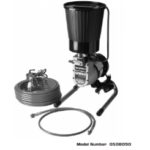Neck pain is discomfort in or around the spine beneath your head, and it can range from mild to severe. While many factors contribute to neck pain, certain lifestyle adjustments may help manage discomfort and support overall well-being. Here are some practical lifestyle changes for addressing neck strain:
Gentle Exercise
Simple neck exercises might help with stiffness. You could start with gentle range-of-motion movements. A few slow neck tilts, where you bring your ear toward your shoulder, can be done throughout the day. Chin tucks are another exercise, and they help strengthen the muscles that support your head. These movements are designed to be performed carefully without causing additional strain.
Remember to move slowly and deliberately. If an exercise causes sharp pain, you should stop immediately. The goal is to gently stretch and strengthen the muscles over time, so consistency is more beneficial than intensity. This approach allows your body to adapt without risking further injury.
You can also find relief from other low-impact activities. For some, swimming and walking are good full-body exercises. They may promote blood flow without putting direct stress on your neck. When you exercise, you are supporting your body’s overall health, which includes your neck.
Adequate Rest
Getting enough sleep is a component of recovery. Your body repairs itself during rest. If you wake up with neck pain, your sleeping position or pillow could be a factor. Stomach sleeping forces your head to turn, and this position can strain neck muscles overnight. A firm mattress typically provides better support for your entire body, including your neck and back.
Hot or Cold Therapy
Applying heat or cold might offer temporary relief from neck discomfort. A cold pack, which you can wrap in a towel, may reduce initial inflammation. It is typically used in the initial days following an injury to promote healing. Cold therapy aims to constrict blood vessels.
Heat therapy may follow the initial cold treatment phase. You could use a heating pad or a warm compress. Heat increases blood flow to the area, and this may help relax sore muscles. The choice between hot and cold depends on the specific situation and personal preference. Try the following:
- Apply cold for 15-20 minutes at a time.
- Apply heat for 15-20 minutes at a time.
- Alternate between hot and cold packs.
Physical Therapy
Physical therapy is another option for addressing neck pain. A specialist can evaluate your specific condition and then create a personalized program to address your needs. The program may include targeted exercises and stretches to improve flexibility.
A medical provider may also provide guidance on ergonomics. Correcting your posture at your desk or in your car can reduce daily strain, which allows you to set up your workspace to support a neutral spine. This guidance helps you develop habits that support long-term neck health, and it encourages consistent practice.
Get Treated for Neck Pain
Making lifestyle adjustments can be part of managing neck pain. From gentle exercises to improved rest, these strategies offer practical ways to address discomfort. If your neck pain persists or worsens, professional evaluation is a logical next step. Pain specialists can help you understand your options and find a path toward relief. Schedule an appointment today to discuss your symptoms and create a personalized treatment plan.











